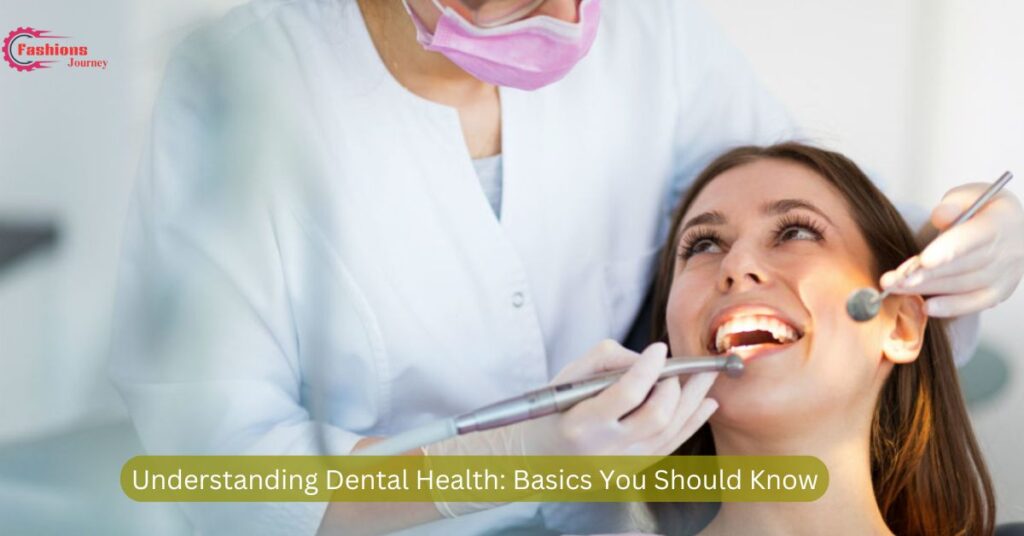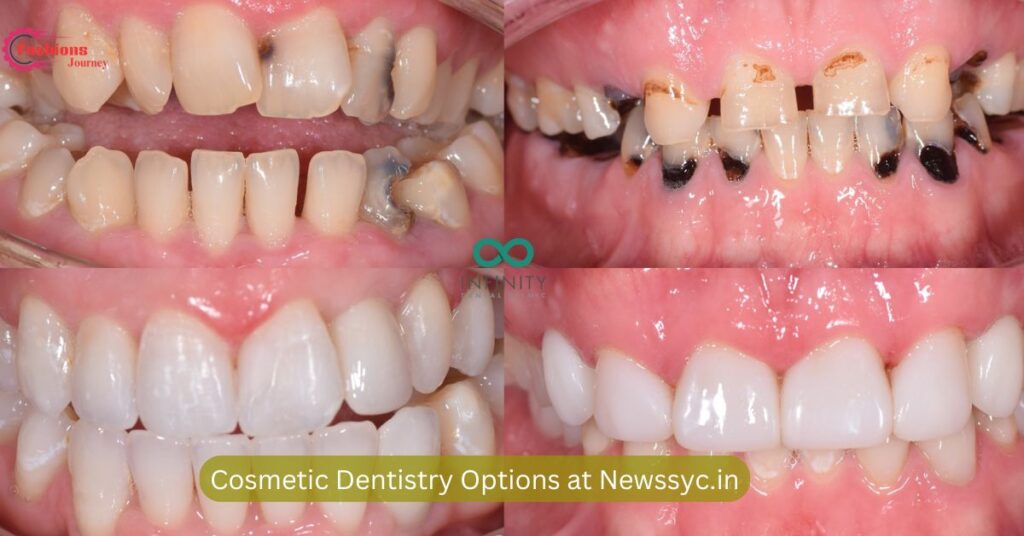Newssyc.in/category/dental is a helpful website about taking care of your teeth. It teaches you how to keep your smile healthy. The site has many tips for good dental habits. You can learn about brushing your teeth the right way. It also talks about why flossing is important.
The website explains why you should visit the dentist regularly. It tells you what happens during a dental check-up. You can read about different dental treatments too. The site has information on braces and fillings. It even talks about how to make your teeth whiter.
Newssyc.in/category/dental also shares fun facts about teeth. You can learn how to prevent cavities. The site gives advice on the best foods for healthy teeth. It tells you which drinks can harm your teeth. The website is like a big guide to keep your mouth happy and healthy.
Understanding Dental Health: Basics You Should Know

Oral hygiene is the foundation of dental health. Brushing twice daily is essential. Use a fluoride toothpaste for best results. Flossing helps remove debris between teeth. Don’t forget to clean your tongue too. A clean mouth prevents bad breath.
Tooth structure: is important to understand. Enamel is the outer protective layer. Dentin lies beneath the enamel. The pulp contains nerves and blood vessels. Knowing these parts helps in dental care.
Saliva: plays a crucial role in oral health. It helps neutralize acids in the mouth. Saliva also aids in remineralization of teeth. Drink plenty of water to maintain saliva flow. Chewing sugar-free gum can stimulate saliva production.
Bacteria: in the mouth can cause problems. Some bacteria are beneficial. Others can lead to tooth decay. Plaque is a sticky film of bacteria. It forms on teeth constantly. Regular cleaning removes plaque effectively.
Diet affects dental: health significantly. Sugary foods feed harmful bacteria. Acidic drinks can erode tooth enamel. Eat a balanced diet rich in vitamins and minerals. Calcium and vitamin D are essential for strong teeth.
Regular dental check-ups: are vital. Visit your dentist every six months. Professional cleanings remove tartar buildup. Early detection of issues prevents major problems. Your dentist can spot signs of oral cancer too.
Gum health: is as important as tooth health. Healthy gums are pink and firm. Bleeding gums can indicate gingivitis. Periodontitis is a severe gum disease. It can lead to tooth loss if untreated.
Teeth grinding: or bruxism, can damage teeth. It often occurs during sleep. A night guard can protect your teeth. Stress reduction may help reduce grinding. Consult your dentist if you suspect you grind your teeth.
Tobacco use: harms oral health. It increases the risk of gum disease. Smoking can lead to tooth discoloration. It also raises the risk of oral cancer. Quitting tobacco improves oral health significantly.
Proper brushing technique: is crucial. Use a soft-bristled brush. Hold the brush at a 45-degree angle to the gums. Use gentle circular motions. Brush for at least two minutes. Don’t forget to brush the tongue.
Read This Blog:Learn to Sit Back and Observe: Not Everything Needs Action – Tymoff
Preventive Dental Care Tips from newssyc.in/category/dental
Daily flossing is essential for gum health. It removes plaque between teeth. Floss at least once a day. Be gentle to avoid injuring your gums. Use about 18 inches of floss each time.Mouthwash can complement brushing and flossing. Choose an alcohol-free rinse. Antibacterial mouthwashes fight germs. Fluoride rinses help strengthen enamel. Use mouthwash after brushing and flossing.
Drinking water benefits oral health. It washes away food particles. Water helps maintain saliva flow. Choose fluoridated water when possible. Rinse your mouth with water after meals.Eating crunchy fruits and vegetables cleans teeth. They stimulate saliva production. Apples, carrots, and celery are good choices. These foods act as natural toothbrushes. They also provide essential nutrients.
Limiting sugary snacks protects your teeth. Bacteria feed on sugar. This produces acid that erodes enamel. If you eat sweets, do so with meals. Rinse your mouth afterward. Better yet, brush your teeth.Using a straw can reduce tooth contact with drinks. This is especially helpful with acidic beverages. It helps prevent staining from coffee or tea. Position the straw towards the back of your mouth.
Chewing sugar-free gum after meals helps. It stimulates saliva production. Saliva neutralizes acids in the mouth. Look for gum with xylitol. Xylitol has antibacterial properties.
Avoiding tobacco products is crucial. They stain teeth and cause bad breath. Smoking increases the risk of gum disease. It also raises oral cancer risk. Seek help if you need to quit.
Using a tongue scraper removes bacteria. It helps freshen breath. Scrape gently from back to front. Clean your tongue daily for best results. A toothbrush can also clean your tongue.
Replacing your toothbrush regularly is important. Change it every three to four months. Frayed bristles don’t clean effectively. Some brushes have color indicators. These show when it’s time for a replacement.
Protecting teeth during sports is wise. Wear a mouthguard for contact sports. Custom-fit guards offer the best protection. They prevent injuries to teeth and gums. Ask your dentist about sports mouthguards.
Avoiding hard foods prevents tooth damage. Don’t chew ice or hard candies. These can crack or chip teeth. Be careful with popcorn kernels. Avoid using teeth to open packages.
Managing dry mouth is essential for some. Saliva helps protect teeth. Certain medications can cause dry mouth. Drink water frequently. Chew sugar-free gum to stimulate saliva. Ask your dentist about saliva substitutes.
Using fluoride treatments strengthens teeth. Fluoride helps prevent cavities. Many toothpastes contain fluoride. Your dentist may recommend additional treatments. Fluoride varnishes are particularly effective.
Maintaining good overall health benefits teeth. Some systemic diseases affect oral health. Diabetes can increase gum disease risk. Heart disease may be linked to oral health. Regular medical check-ups are important.
Exploring Dental Treatments and Procedures

Dental cleanings: are routine procedures. They remove plaque and tartar. Dentists use special tools for cleaning. Cleanings help prevent gum disease. They’re usually done every six months.
Dental fillings :repair cavities. Various materials are used for fillings. Composite resin matches tooth color. Amalgam fillings are durable. Your dentist will recommend the best option.
Root canals: save infected teeth. They remove infected pulp. The tooth is then sealed. Root canals relieve pain. They prevent the need for extraction.
Dental crowns: restore damaged teeth. They cover the entire visible part. Crowns protect weak teeth. They improve appearance too. Various materials are used for crowns.
Dental bridges: replace missing teeth. They’re fixed to adjacent teeth. Bridges restore your smile. They prevent shifting of other teeth. Proper care extends their lifespan.
Dental implants: are permanent replacements. They’re surgically placed in the jawbone. Implants look and function like natural teeth. They prevent bone loss. Implants can last a lifetime with proper care.
Tooth extractions: remove problem teeth. This might be necessary for severe decay. Impacted wisdom teeth often need extraction. Recovery usually takes a few days. Follow post-extraction care instructions carefully.
Orthodontic treatments: align teeth. Braces are common orthodontic devices. Clear aligners offer a less visible option. Treatment duration varies by case. Regular adjustments are necessary.
Teeth whitening: brightens your smile. Professional treatments are most effective. At-home kits are also available. Results can last several months. Avoid staining foods and drinks after whitening.
Dental sealants: prevent cavities. They’re applied to chewing surfaces. Sealants are especially useful for children. They last several years. Reapplication may be necessary.
Gum grafts: treat receding gums. Tissue is taken from the palate. It’s then attached to the affected area. Grafts protect exposed roots. They improve the gum line’s appearance.
Dental bonding: repairs minor damage. It uses tooth-colored resin. Bonding can fix chips or cracks. It’s less expensive than veneers. Bonding typically lasts several years.
Inlays and onlays: restore larger cavities. They’re more durable than fillings. Less tooth structure is removed than with crowns. They’re custom-made in a lab. Inlays and onlays can last many years.
Dentures: replace multiple missing teeth. Full dentures replace all teeth. Partial dentures fill in gaps. Modern dentures look natural. They require regular cleaning and maintenance.
Periodontal treatments: address gum disease. Scaling removes tartar below the gum line. Root planing smooths root surfaces. Antibiotics may be prescribed. Regular maintenance prevents recurrence.
Read This Blog:Halo (2003) Game Icons Banners: A Comprehensive Guide to Masterful Visuals
Cosmetic Dentistry Options at Newssyc.in

Teeth whitening is a popular cosmetic procedure. It brightens discolored teeth. Professional treatments offer quick results. At-home kits are more gradual. Results can last up to a year.Dental veneers improve tooth appearance. They’re thin porcelain shells. Veneers cover front tooth surfaces. They can change shape, size, and color. Veneers are permanent and stain-resistant.
Dental bonding fixes minor imperfections. It uses tooth-colored resin. Bonding can repair chips or gaps. It’s less expensive than veneers. The procedure is usually completed in one visit.Enamel shaping improves tooth contours. It’s also called contouring. The dentist removes small amounts of enamel. This can fix minor shape issues. It’s often combined with bonding.
Gum contouring enhances gum appearance. It reshapes the gum line. This can correct a “gummy” smile. Laser technology makes the procedure precise. Healing is typically quick.Dental implants replace missing teeth. They look and function naturally. Implants prevent bone loss. They don’t affect adjacent teeth. Implants can last a lifetime with proper care.
Orthodontic treatments straighten teeth. Traditional braces use metal brackets. Clear aligners offer a discreet option. Treatment improves both appearance and function. Duration varies by individual case.Smile makeovers combine multiple procedures. They address various cosmetic issues. The dentist creates a custom treatment plan. Makeovers can dramatically improve smiles. They often boost self-confidence.
Managing Dental Anxiety: Tips and Techniques

Communication with your dentist is key. Express your fears openly. A good dentist will listen and respond. Discuss your concerns before treatment. This helps build trust.
Relaxation techniques can ease anxiety. Try deep breathing exercises. Progressive muscle relaxation helps. Practice these before your appointment. Use them during treatment too.
Distraction methods take your mind off treatment. Bring headphones and music. Some offices offer TV or movies. Squeeze balls can help release tension. Focus on a spot on the ceiling.
Sedation dentistry offers various options. Nitrous oxide provides mild relaxation. Oral sedatives offer deeper calm. IV sedation is for more severe anxiety. Discuss sedation options with your dentist.
Gradual exposure can help overcome fears. Start with a dental office tour. Move on to a cleaning. Build up to more complex procedures. This approach reduces anxiety over time.
Choosing the right dentist is crucial. Look for one specializing in anxious patients. Read reviews from other anxious patients. A compassionate dentist makes a big difference. Don’t hesitate to switch if you’re uncomfortable.
Bringing a support person can help. They provide emotional support. Choose someone calm and reassuring. They can advocate for you if needed. Their presence can be comforting.
Understanding procedures reduces fear. Ask your dentist to explain everything. Knowledge helps dispel misconceptions. It gives you a sense of control. Don’t hesitate to ask questions.
Scheduling wisely can minimize stress. Book appointments for less busy times. Morning appointments mean less waiting. You’ll have less time to worry. Avoid rushing to your appointment.
Using positive visualization can be effective. Imagine a successful, painless visit. Picture yourself calm and relaxed. Repeat positive affirmations. This can reduce anticipatory anxiety.
Avoiding caffeine before appointments helps. Caffeine can increase anxiety. Stick to water or herbal tea. This helps keep you calm. It also prevents dehydration.
Practicing good oral hygiene builds confidence. Regular brushing and flossing help. This reduces the need for extensive work. You’ll feel more in control. Good habits lead to easier visits.
Utilizing aromatherapy can be calming. Some offices use lavender scents. Bring a scented handkerchief if allowed. Certain scents promote relaxation. Discuss this option with your dentist.
Considering cognitive-behavioral therapy helps some. It addresses underlying fear causes. CBT provides coping strategies. It can significantly reduce dental anxiety. A therapist can guide you through this.
Using acupuncture or acupressure may help. These techniques can reduce anxiety. They promote overall relaxation. Discuss this with your healthcare provider. Some dentists offer these services.
Dental Innovations and Technology Featured on Newssyc.in

Digital X-rays offer numerous benefits. They use less radiation than traditional X-rays. Images are available immediately. They can be easily shared with specialists. Digital storage saves space.
Intraoral cameras provide detailed views. They show areas difficult to see. Patients can view their own mouth. This improves understanding of dental issues. It aids in treatment planning.
3D printing is revolutionizing dentistry. It creates precise dental models. Custom dental appliances are possible. Surgical guides improve implant placement. 3D printing speeds up many processes.
Laser dentistry offers many applications. It can detect cavities early. Lasers prepare teeth for fillings. They’re used in gum treatments. Laser use often reduces the need for anesthesia.
CAD/CAM technology enables same-day restorations. Crowns can be made in one visit. It eliminates the need for temporary crowns. The fit is often more precise. This technology saves time.
Air abrasion is a drill-free technique. It removes decay using air and particles. It’s often painless. Less tooth structure is removed. It’s ideal for small cavities.
Dental implant advances improve outcomes. New surfaces promote faster healing. Mini implants offer more options. Computer-guided placement increases accuracy. Success rates continue to improve.
Invisalign technology straightens teeth discreetly. Clear aligners are nearly invisible. Treatment is often faster than traditional braces. Patients can remove aligners for eating. Compliance tracking improves results.
Digital smile design aids cosmetic planning. It uses photos and 3D imaging. Patients can preview potential results. It improves communication between dentist and patient. This leads to better outcomes.
Cone Beam CT provides detailed 3D images. It’s useful for complex cases. Implant planning becomes more precise. It aids in diagnosing TMJ disorders. Radiation dose is lower than medical CT.
Dental stem cell research shows promise. Stem cells may regrow tooth tissue. They could potentially treat periodontal disease. Whole tooth regeneration is being studied. This field is rapidly evolving.
Teledentistry expands access to care. It allows remote consultations. Follow-ups can be done virtually. It’s useful for preliminary screenings. Teledentistry improves care in rural areas.
Smart toothbrushes improve home care. They track brushing habits. Some provide real-time feedback. Data can be shared with dentists. This technology encourages better oral hygiene.
Nanotechnology in dentistry is advancing. Nanoparticles can remineralize enamel. They may improve filling materials. Nano-coatings could prevent bacterial growth. This field holds great potential.
Frequently Asked Questions
How often should I brush my teeth?
Brush at least twice daily, ideally after meals. Use fluoride toothpaste and a soft-bristled brush.
Is flossing really necessary?
Yes, flossing is crucial. It removes plaque and food particles between teeth where brushes can’t reach.
What causes bad breath?
Poor oral hygiene, certain foods, dry mouth, and some medical conditions can cause bad breath.
How can I prevent cavities?
Brush regularly, floss daily, limit sugary foods, and visit your dentist for regular check-ups and cleanings.
Are electric toothbrushes better than manual ones?
Electric toothbrushes can be more effective at removing plaque, but proper technique with a manual brush is also effective.
Conclusion
Dental health is crucial for overall well-being. Newssyc.in/category/dental provides comprehensive information. Preventive care is the foundation of good oral health. Regular check-ups catch problems early. Modern technologies improve dental treatments.
Cosmetic dentistry can enhance your smile. Managing dental anxiety is possible with various techniques. New innovations continue to advance dental care. Remember, your oral health affects your whole body.
Take charge of your dental health today. Use the tips and information provided here. Consult your dentist for personalized advice. A healthy smile contributes to a healthier you. Keep exploring newssyc.in/category/dental for the latest in dental care.

Liam Patel is a passionate fashion enthusiast with a keen eye for style trends.
With a background in textile design and years of experience in the fashion industry, Liam brings a unique perspective to his writing. He loves exploring sustainable fashion and street style.








